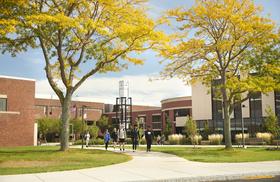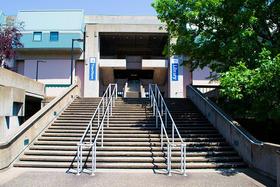Guided Pathways: What They Mean for Your Child’s Education
Choosing the right educational path for your child has never been more complex—or more important. As parents and educators evaluate how best to prepare students for college, careers, and life beyond the classroom, a model known as Guided Pathways is reshaping the conversation.
Originally developed for community colleges, Guided Pathways have expanded into K–12 schools and even some private institutions. In 2025, this approach is increasingly seen as a roadmap to help students connect their learning to clear outcomes, such as higher education success, workforce readiness, or vocational training.
This article explains what Guided Pathways are, why they matter, and how they may affect your child’s education.
What Are Guided Pathways?
At its core, Guided Pathways is an educational model designed to give students a structured, transparent route through their academic journey. Instead of navigating a maze of disconnected classes, students follow clearly defined programs that align with career or transfer goals.
The model emphasizes four pillars, as outlined by the American Association of Community Colleges (AACC):
Clarify the Path – Schools define clear program maps with sequenced courses.
Help Students Choose and Enter a Path – Early career and academic advising guide students to make informed decisions.
Keep Students on the Path – Ongoing monitoring and support ensure progress.
Ensure Students Are Learning – Courses integrate applied learning and outcomes assessments.
Why Guided Pathways Matter in 2025
The traditional model of schooling often leaves students overwhelmed by choices and unclear about how individual classes connect to long-term goals. Guided Pathways address this by:
Reducing Dropout Rates: Students with a clear sense of direction are more likely to persist.
Improving Career Readiness: Pathways link academic skills with real-world applications.
Aligning High School and College: Many districts now adopt early college or dual-enrollment options within a Guided Pathways framework.
Supporting Equity: Structured guidance can particularly benefit first-generation students and those from underrepresented backgrounds.
For parents, this means that your child’s school may begin integrating not only academics but also career exploration and personal development into their learning journey.
Guided Pathways in K–12 Education
While Guided Pathways started in higher education, school districts across the country are piloting similar models in high schools. For example:
Career Academies: Students might choose themed academies such as health sciences, engineering, or arts, each with a sequence of courses leading to both graduation and potential industry credentials.
Dual Enrollment: Pathways often integrate college credit opportunities, allowing students to graduate with both a diploma and credits toward a degree.
Personalized Advising: Students are paired with academic or career advisors earlier, sometimes as early as ninth grade.
For families, the benefit lies in clarity: rather than asking your teen to select classes with little context, schools provide a roadmap that connects high school coursework with college majors or career paths.
Guided Pathways in Community Colleges
Community colleges remain the central hub for Guided Pathways implementation. According to a 2024 report from the Community College Research Center (CCRC), more than 400 institutions across the U.S. are actively redesigning programs around this model.
Key improvements seen include:
Higher Transfer Rates: Students following a Guided Pathway are more likely to complete an associate degree and transfer to a four-year institution.
Time and Cost Savings: By eliminating unnecessary courses, students reduce both tuition costs and time to degree.
Stronger Industry Partnerships: Many colleges design pathways in consultation with local employers, ensuring that graduates are job-ready.
What This Means for Private and Independent Schools
Private schools, particularly those with strong college-preparatory missions, are taking note of the Guided Pathways framework. While they may not adopt the model in full, many are integrating its principles by:
Creating college counseling programs that mirror pathway advising.
Partnering with local colleges for dual-credit opportunities.
Offering capstone projects or internships to connect classroom learning with real-world outcomes.
For independent schools, Guided Pathways represent a way to differentiate their curriculum while meeting parent demand for concrete college and career outcomes.
Expert Perspectives
Dr. Davis Jenkins, Senior Research Scholar at CCRC, noted in a recent interview that Guided Pathways “shift the focus from course selection to purpose-driven education.” This reframing encourages students to see learning as part of a broader narrative rather than isolated requirements.
Similarly, a 2025 survey of parents by the National Association for College Admission Counseling (NACAC) found that 72% of families want schools to provide clearer connections between academics and careers—exactly the promise of Guided Pathways.
Benefits and Challenges for Families Benefits
Clarity: Parents and students can see how today’s choices lead to tomorrow’s opportunities.
Efficiency: Streamlined coursework reduces wasted time and money.
Motivation: When students see relevance, engagement increases.
Support: Built-in advising provides consistent guidance.
Challenges
Flexibility vs. Structure: Some students may feel limited by predefined options.
Implementation Variability: The quality of Guided Pathways depends heavily on how well a school or college designs them.
Equity Concerns: Without careful monitoring, students may be tracked into certain pathways too early.
How Parents Can Support Their Child
If your child’s school or college offers Guided Pathways, here are steps you can take:
Ask About Pathway Options: Learn which programs are available and how they align with your child’s interests.
Encourage Exploration: Early in the process, allow your child to sample different courses or extracurriculars before committing.
Stay Engaged with Advisors: Regularly meet with academic counselors to track progress.
Look for Real-World Connections: Support internships, summer programs, or volunteer opportunities tied to your child’s pathway.
A Comparison: Traditional Schooling vs. Guided Pathways
| Feature | Traditional Model | Guided Pathways Model |
|---|---|---|
| Course Selection | Student-driven, often confusing | Structured program maps |
| Advising | Limited, episodic | Ongoing, proactive support |
| Career Alignment | Often unclear until late stages | Integrated from the start |
| Outcomes | Variable completion and readiness | Higher persistence and clarity |
The Future of Guided Pathways
Looking ahead, Guided Pathways are likely to expand beyond community colleges into more high schools, charter networks, and independent schools. In 2025, states such as California, Texas, and Florida are investing in scaling pathways across entire systems, with federal funding supporting workforce-aligned education.
For families, this means the Guided Pathways model is no longer experimental—it is becoming mainstream. Whether your child is in private school, public school, or community college, you can expect to encounter some form of pathway-based planning in the years ahead.
Conclusion
Guided Pathways represent a shift toward purposeful, structured education that prepares students not only for college admission but also for meaningful careers. While no system is perfect, the model’s emphasis on clarity, advising, and outcomes offers tangible benefits for families navigating the complexity of modern education.
For parents, the key takeaway is simple: if your child’s school offers Guided Pathways, engage with the process early. It could be one of the most effective tools to ensure that today’s learning leads to tomorrow’s success.














